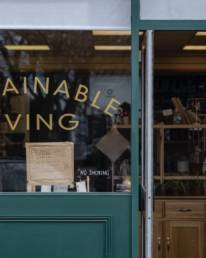One of the most powerful tools at your disposal is your pension. And if you’re a business owner, you’re likely to have come across two stand-out options: the SIPP and the SSAS.
They may sound similar, but they work in very different ways. Both offer flexibility and tax advantages. But depending on how your business is structured, and what you’re hoping to achieve with your pension, one may be more suitable than the other.
In this article we break down the key differences in a SIPP vs SSAS comparison, from property investment and business lending to trustee duties and tax relief.
What is a SIPP?
A SIPP (Self-Invested Personal Pension) is, as the name suggests, a pension you set up for yourself. Think of it like a build-your-own pension plan, one that gives you access to a broad menu of investment options, from stocks and funds to commercial property.
It’s typically used by freelancers, company directors or high earners who want more flexibility and control over their retirement savings.
A SIPP is run through a pension provider, who also acts as trustee and handles the administration. So, while you can choose how your money is invested, you don’t need to take on the paperwork.
One important thing to know: you can’t use a SIPP to invest in or lend to your own business. HMRC rules require a clear separation between your pension and any connected company activity.
Explore more: What is a SIPP and is it right for me?
What is a SSAS?
A SSAS (Small Self-Administered Scheme) is a pension set up by a company, often by a business for its directors or senior staff. Unlike a SIPP, the members of a SSAS are usually also trustees, which gives them direct responsibility for managing the pension scheme and its investments.
SSAS pensions are designed for smaller groups and by law, they can have no more than 11 members. They’re particularly popular with family-run firms or close-knit businesses where colleagues want to pool their pension assets for larger, shared investments.
This structure opens the door to some unique planning opportunities. A SSAS can, under strict conditions, lend money to the company, buy shares in it, and own commercial property that’s leased back to the business. That kind of flexibility can be valuable for business owners who want to use pension assets to support the company’s growth.
That said, SSAS pensions do come with more responsibility, from reporting duties to compliance with pension and tax regulations.
Explore more: What is a SSAS and it is right for you?
SIPP vs SSAS: How do they compare?
Here’s a simple overview of how the two pension types stack up:
| SIPP | SSAS | |
| Type | Personal pension | Occupational pension |
| Who sets it up | Individual | Business/employer |
| Management | Provider-administered | Trustee-run (often the members) |
| Number of members allowed | Unlimited | Maximum of 11 |
| Can invest in your company? | Not permitted | Yes – up to 5% of fund value |
| Can lend to your company? | Not permitted | Yes – up to 50% of scheme assets |
| Property investment | Yes | Yes (can lease to the company) |
| Admin involvement | Low | High – trustees have duties |
| Costs | Lower setup, provider charges | Higher setup, some fees may be deductible |

Can my pension buy property?
Yes, both SIPPs and SSASs allow investment in commercial property. It’s one of the reasons they’re popular with business owners. You can use your pension to buy an office, retail unit or industrial space, and any rent paid by tenants goes back into the pension, tax-free.
But there are important distinctions:
- With a SIPP, your business can’t lease the property; it must be an arm’s-length arrangement.
- With a SSAS, leasing property to your business is allowed, provided it’s done on commercial terms.
Both pensions also allow borrowing, up to 50% of their net asset value, to help fund the purchase of a commercial property.
| SIPP | SSAS | |
| Can hold commercial property | Yes | Yes |
| Lease property to your business | No | Yes |
| Pool resources with other members | Yes (assets remain separate) | Yes (assets pooled) |
| Borrow to support a property purchase | Yes | Yes |
Can my pension help fund my business?
A SSAS can provide a secured loan to the sponsoring business of up to 50% of the scheme’s net assets. It can also invest directly in the company, for example, by buying shares (usually limited to 5% of the fund, with some flexibility in specific circumstances).
These options aren’t available under a SIPP. HMRC rules are clear: SIPPs can’t be used to support a business that you or any connected party control. Doing so could result in heavy tax penalties, potentially up to 55% of the transaction.
In short: if you’re exploring how your pension might be used to support or interact with your company, a SSAS offers more scope, but it must be done within very specific limits and with expert advice.
Finding the right fit
Rather than thinking in terms of one being “better” than the other, it’s more useful to view SIPPs and SSASs as serving different needs.
Some people prefer the simplicity of a SIPP for individual investing, especially where business involvement isn’t required. Others value the additional flexibility a SSAS can provide, particularly when pooling funds or aligning pension planning with business strategy.
But the right option depends entirely on your personal circumstances, your business structure, retirement goals, appetite for risk, and how actively you want to be involved. Before setting up either type of pension, keep in mind:
- Liquidity: Property is an illiquid asset, it can’t always be sold quickly
- Costs: Admin, legal fees and valuations can add up
- Borrowing: Adds both opportunity and complexity
- Regulations: Pension rules are strict, and they change, often
- Investment risk: A pension is a type of investment, its value can go down as well as up, and you may get back less than you invested
A pension should be part of a wider financial strategy, not a standalone move. This is why talking to a financial planner really helps. They’ll walk you through the implications, help you weigh up the trade-offs, and tailor a solution to your needs.
Speak to an Amber River financial planner
At Amber River, our financial planners can help you explore your options, understand the rules, and design a pension strategy that aligns with your personal and business goals. Whether that’s a SIPP, a SSAS, or a combination of both, we’ll help you see the full picture before you take your next step.
We have a network of Chartered financial planners right across the UK, ready to offer truly independent advice. To set up an initial appointment, call 0800 915 0000, or alternatively use our contact form here.
FAQs: SIPP vs SSAS Pension
1. What’s the main difference between a SIPP and a SSAS?
A SIPP is a personal pension set up by an individual. A SSAS is a scheme created by a company, typically for directors, with more flexibility to support business activities.
2. Can I invest in my own company using my pension?
Only through a SSAS. SIPPs can’t invest in or lend to connected businesses. A SSAS can invest up to 5% in shares and lend up to 50% of scheme assets, under HMRC rules.
3. Can both pensions invest in commercial property?
Yes. But only a SSAS can lease that property to the sponsoring business.
4. Are SSAS pensions only for large companies?
No. They’re often used by small businesses, family firms and partnerships with a handful of directors or members.
5. Can I borrow money through my pension?
Both SIPPs and SSASs can borrow up to 50% of the fund’s value for certain investments. Only a SSAS can lend money to your company.
6. What are the tax benefits of SIPPs and SSASs?
Both offer the following tax benefits:
- Receive tax relief on contributions
- Benefit from tax-free investment growth
- Deduct certain SSAS admin costs against Corporation Tax (if eligible)
- Until April 2026, pensions can currently be passed on tax-free if you die before age 75. However, this rule is set to change. From 6 April 2026, all beneficiaries will pay income tax on inherited pensions, regardless of the age at death.
7. Can I have both a SIPP and a SSAS?
Yes, and some people do. For example, a SIPP for personal wealth building, and a SSAS for business-aligned strategies.
Disclaimer
The information within this article was correct at the time of publishing, but laws and tax rules are subject to change. Your circumstances and where you live in the UK may also have an impact on your tax treatment.
Related Posts
25 June 2025
Read More

22 June 2025
Read More

11 June 2025
Read More

4 June 2025
Read More

28 April 2025
Read More

14 June 2024
Read More

